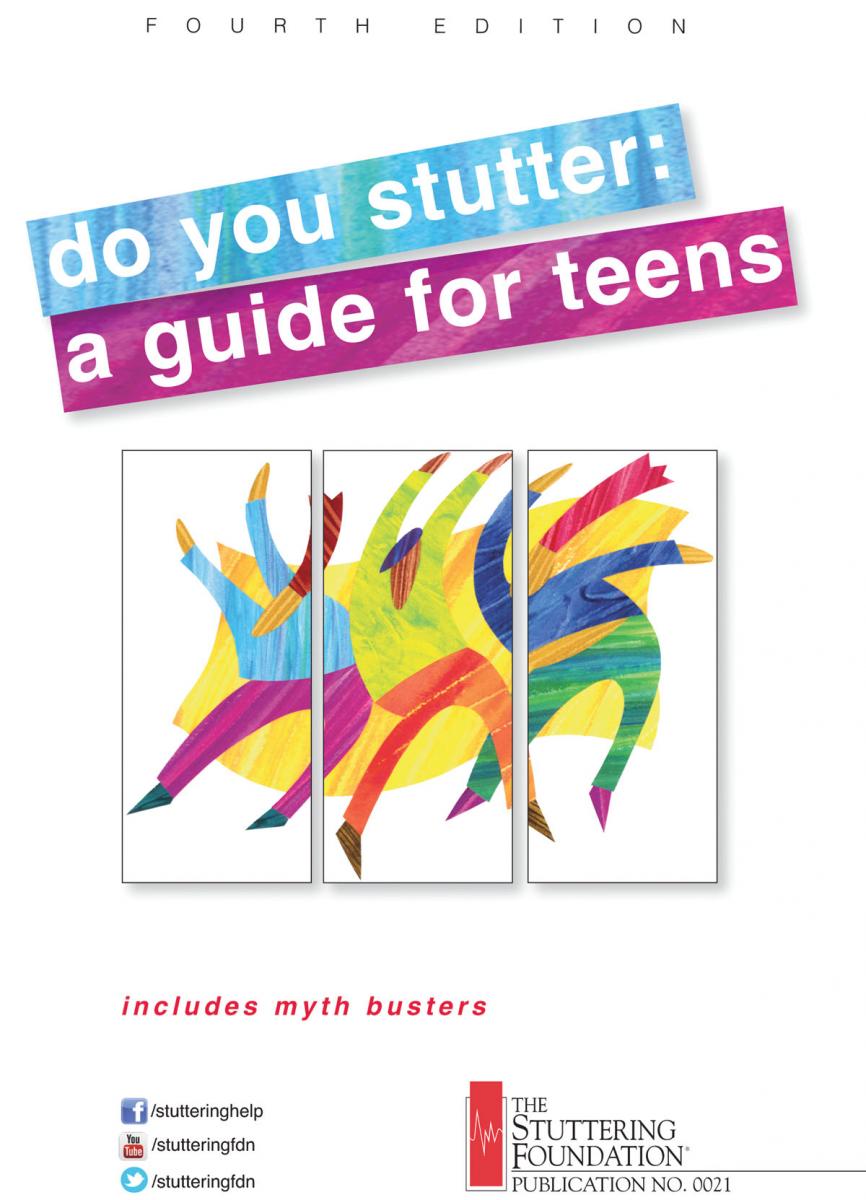 Now available in a new printing, the Stuttering Foundation’s Do You Stutter: A Guide For Teens explains to teenagers that, with the right approach, stuttering does not have to either encumber their present or undermine their future. With each chapter written by a specialist in the field of stuttering, the reader has access to practical guidelines on how to improve their speech and build their confidence while managing external factors. With this original publication, the Stuttering Foundation equips teenagers who stutter with the mindset and tools needed to improve their life and set themselves up for success.
Now available in a new printing, the Stuttering Foundation’s Do You Stutter: A Guide For Teens explains to teenagers that, with the right approach, stuttering does not have to either encumber their present or undermine their future. With each chapter written by a specialist in the field of stuttering, the reader has access to practical guidelines on how to improve their speech and build their confidence while managing external factors. With this original publication, the Stuttering Foundation equips teenagers who stutter with the mindset and tools needed to improve their life and set themselves up for success.
This book demystifies stuttering and then offers strategies for everyday situations to encourage teenagers who stutter to, as Dr. Richard Curlee stresses, “start working on what [they] can change” (11). It conveys that when it comes to stuttering, like with other hardships in life, you have to outgrow “self-defeating thoughts and behaviors” (10) if you want to improve your situation. Dr. Curlee admits that “there is no known cure” (11) and Dr. Edward Conture confirms that many facts about stuttering are not fair. Stuttering can disrupt life, to be sure, but only if you let it. What the facts also reveal is that stuttering is neither your fault nor a reflection of your character—Dr. Conture affirms that the “truth is that all people have problems,” and “the ability to handle problems” is what “really counts” (17). To that end, Drs. Dean Williams, Hugo Gregory, and Lois Nelson explain in their respective chapters how to cope with parents, school, and friends. The individual determines how stuttering manifests in their life and needs to take deliberate actions based on credible information to yield tangible results.
This book shows the teenager who stutters that stuttering does not force them into a procrustean bed—their life and future depend on factors within their control and pliable to resources at their disposal. In the penultimate chapters, to confirm that point, Dr. Barry Guitar elaborates on ways teenagers can personally address their stuttering and Dr. Lisa Scott enumerates factors in considering professional therapy.
What makes this book so remarkable is that it provides both the substructure—the revelation that determination is key—and the superstructure—the strategic plan for how to express confidence in practical ways—for surmounting the seeming mountain-sized hurdle blocking teenagers who stutter.
In the book’s final personal message, Dr. Charles Van Riper shares, to invalidate any remaining impression that there is an impasse, that although he was “a very severe stutterer” viewed as “epileptic or crazy” by strangers and at one time “felt not only helpless but hopeless,” he enjoyed a “wonderful and rewarding life” (69). No matter having “stuttered all [his] days,” he “pioneered a new profession,” “married a lovely woman,” had a large, loving family, and “made a lot of money” from writing books (70). In other words, the situation teenagers who stutter face is indeed unique, but it is so in a positive rather than detrimental way. People have the ability to change themselves and their circumstances, and teenagers in particular are in an embryonic stage in life where little is set in stone. The Stuttering Foundation hopes that the teenager who stutters exploits this book’s pearls of advice to, as Dr. Van Riper put it, not let “their stuttering prevent them from talking” and realize that, like it was for all the successful people who stutter, there is “hope for you too” (70).
From the Fall 2021 Magazine






 Podcast
Podcast Sign Up
Sign Up Virtual Learning
Virtual Learning Online CEUs
Online CEUs Streaming Video Library
Streaming Video Library